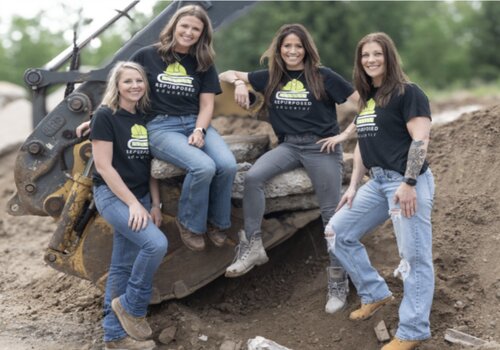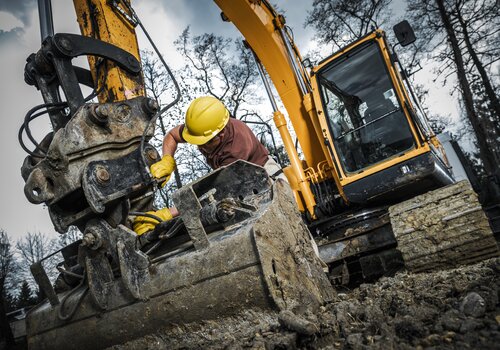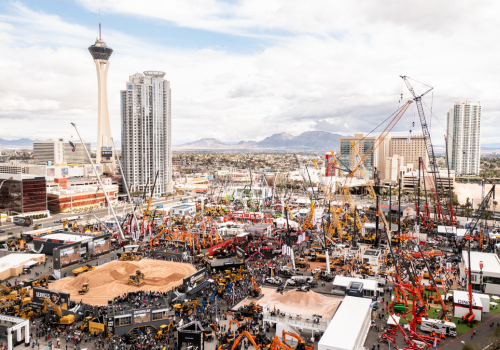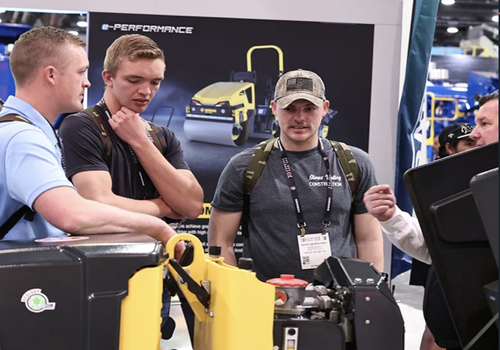When it comes to running a construction business, your truck isn’t just a vehicle—it’s your mobile office, your tool shed and your workhorse all rolled into one. But with so many sizes, classes and configurations out there, choosing the right heavy-duty truck can feel like trying to order lunch from a 10-page diner menu. Let’s break it down so you can make a smart, confident decision that fits your business needs—and your budget.
Step 1: Know Your Workload
Before you even look at a truck, take a hard look at what you’re hauling. Are you towing a skid steer every day? Transporting drywall and lumber? Or just moving tools and a crew from site to site?
Here’s a quick cheat sheet:
-
Class 3 (e.g., Ford F-350): 10,001–14,000 GVWR (lbs) | Light construction, small trailers
-
Class 4–5 (e.g., Ram 4500, Ford F-550): 14,001–19,500 GVWR (lbs) | Medium-duty hauling, dump bodies
-
Class 6–7 (e.g., Freightliner M2): 19,501–33,000 GVWR (lbs) | Heavy equipment, large trailers
-
Class 8 (e.g., Peterbilt 389): 33,001+ GVWR (lbs) | Long-haul, extreme-duty loads
If you’re regularly towing more than 10,000 pounds or carrying heavy payloads like gravel or concrete forms, you’re likely in Class 4 or higher territory.
Step 2: Match the Truck to the Task
Not all heavy-duty trucks are created equal. Here’s what to consider:
-
Towing Capacity: Look for a truck that can tow at least 10–20% more than your heaviest trailer. This gives you a safety buffer and protects your drivetrain.
-
Payload Capacity: Don’t forget what’s going in the bed. Payload includes tools, materials and even passengers.
-
Bed Length: Longer beds (8 feet or more) are great for hauling lumber or piping, but they can make parking a nightmare.
-
Cab Configuration: Need room for a crew? Go with a crew cab. Solo operator? A regular cab might save you money and space.
Engine type (gas vs. diesel), axle ratio and transmission also play a big role in performance and fuel economy. Diesel engines, for example, offer more torque and better towing, but they come with higher upfront and maintenance costs.
Step 3: Consider Upfits and Customization
Construction trucks are rarely “off-the-lot” ready. Think about what you’ll need:
-
Toolboxes and Racks: Keep your gear secure and organized.
-
Dump Beds or Flatbeds: Ideal for hauling debris or oversized materials.
-
Liftgates or Cranes: For heavy lifting without breaking your back.
Make sure the truck’s frame and suspension can handle the added weight of these upfits. Some models, like the Ford Super Duty or Ram 5500, are designed with upfitting in mind.
Step 4: Don’t Ignore Maneuverability and Comfort
Your truck might spend as much time in traffic or tight job sites as it does on the open road. Bigger isn’t always better if you can’t get it into the site or park it at the yard.
-
Turning Radius: Important for urban or residential work.
-
Ride Quality: Air suspension and ergonomic seats can make a long day feel shorter.
-
Tech Features: Backup cameras, trailer assist and navigation aren’t just luxuries—they’re time-savers.
Newer heavy-duty trucks are blending brawn with brains, offering creature comforts and smart tech that make them easier to live with day to day.
Step 5: Factor in Total Cost of Ownership
The sticker price is just the beginning. Be sure to budget for:
-
Fuel Costs: Diesel is more efficient for towing, but pricier at the pump.
-
Maintenance: Bigger trucks mean bigger parts—and bigger repair bills.
-
Insurance: Heavier trucks often come with higher premiums.
-
Depreciation: Some brands hold value better than others (examples: Ford and Ram).
Used trucks can offer great value, especially if they’ve been well maintained. Just be sure to get a full inspection and service history before buying.
Choose for Today—and Tomorrow
Your truck should grow with your business. If you’re planning to expand your crew or take on bigger jobs, it might be worth sizing up now rather than upgrading again in a year.
Choosing the right heavy-duty truck isn’t just about horsepower and hauling—it’s about making your workday smoother, safer and more efficient. Share these articles with your fleet manager to help them make the right equipment choices: Compact vs. Heavy-Duty Equipment and Renting Vs. Buying.
Photo credit: SHUTTERSTOCK.COM/VIRRAGE IMAGES












